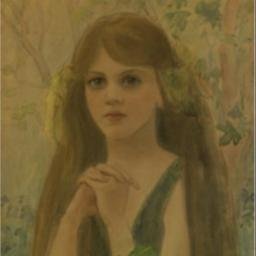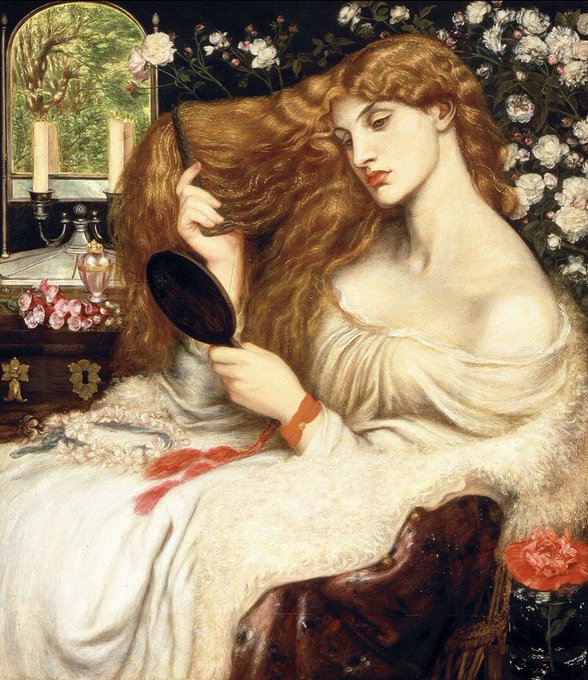Little Briar-Rose is the Grimm’s version of Sleeping Beauty, published in 1812. Briar-rose is also known as the wild rose & has thorns that form hooks, just like the hedge that grows around Briar-Rose’s castle for 100 years until the prince arrives. #FolkloreThursday Img: CMB
The King of the Golden River, by John Ruskin (1841). 3 brothers are tasked by a kingly dwarf to deliver 3 drops of holy water to create a river of gold. Only the good brother succeeds as he puts others’ needs above his own. Illust: Arthur Rackham 1932 edition. #FolkloreThursday
Lilith was Adam’s first wife, created as an equal out of the same clay. Medieval texts have it that she refused to lie under Adam, & left the garden of Eden, refusing to return, to become the ultimate she-demon, capable of unspeakable evil. #FairyTaleTuesday
Img: Rossetti
Beauty & the Beast, modern day interpretation by LiigiaKlavina, #Latvian #artist #FairyTaleTuesday
The Blackthorn rules the dark half of the year from Samhain until May Day. It is dark moon magic, an “increaser of secrets.” Its thorns are the pins of a poppet, its wands used for cursing.
A tree protected by faeries, its berries are the sloe. #FairyTaleTuesday Img: CMB
In #BeatrixPotter’s fable, naive Jemima Puddle-Duck, who has been duped by a charming “foxy-whiskered gentleman”, is saved from being the cunning fox’s roast dinner by canny Kep the farm collie, who chases him away. However the fox returns later in his own tale. #FaustianFriday
Morgan le Fay was originally a great healer, shapeshifter & enchantress, who ruled Avalon in the Arthurian legend. However by late Medieval times her character had become a sorceress, scheming to usurp her half-brother Arthur’s throne. #FairyTaleTuesday Img: WH Margetson, 1908
The #Wassail Queen on Old Twelfth Night, 17th Jan, was often a child. She would knock on the trunk of the oldest tree in the orchard & ask the fertility spirit within, known as the Apple Tree Man, “to awake”. She then placed cider-soaked bread in its branches. #FolkloreThursday
The daisy is sacred to Freya, Norse goddess of love, beauty & fertility. Thus it came to symbolise childbirth & motherhood. The daisy is actually 2 flowers - a disc floret & a ray floret, which blend together perfectly, so it also symbolises true love. Img: CB #FolkloreThursday
7th Jan is Distaff Day when Medieval women resumed their spinning after a break over Christmastide. A distaff is used to hold fibre when spinning is done by hand. It was a day of pranks when lads tried to set fire to the flax & in return were doused with water. #FolkloreThursday





















